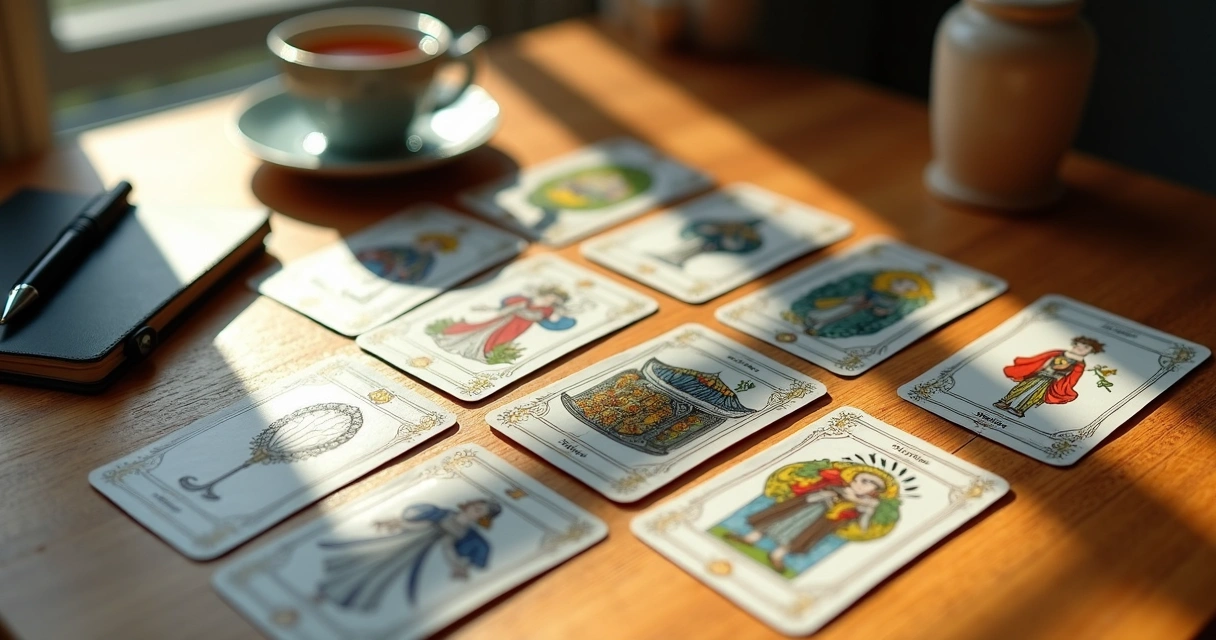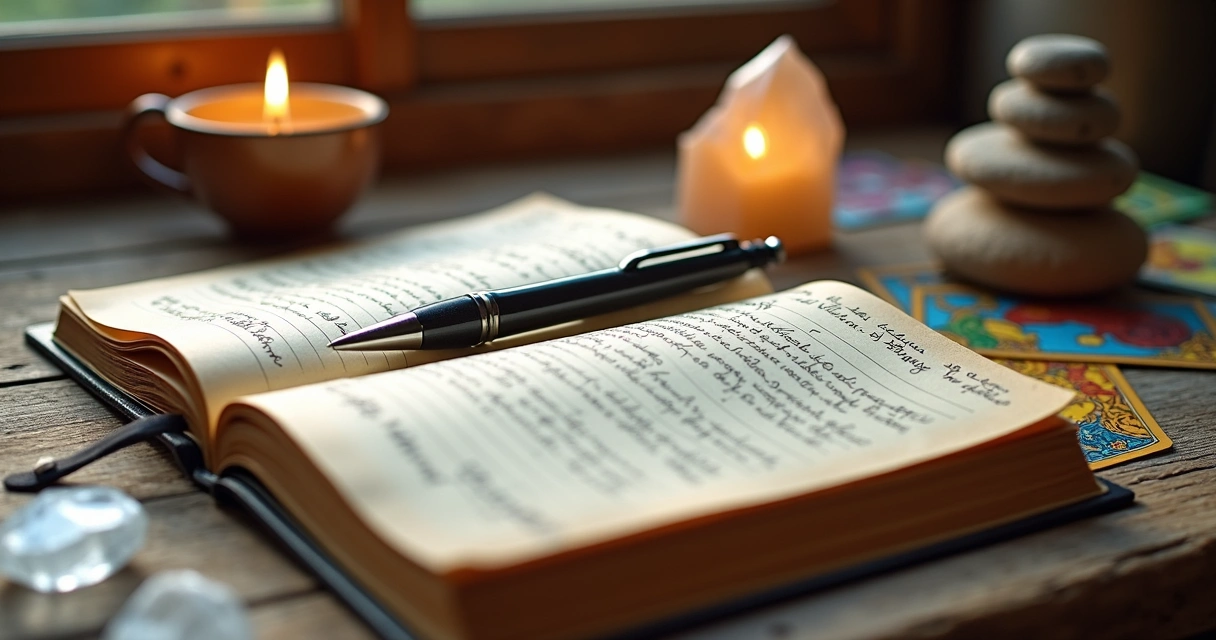Card reading traditions hold both mystery and method. Tucked between the well-known Tarot and a world of oracle decks, one small but powerful system stands out for its directness and clarity: the Petit Lenormand. Whether you’re a professional reader seeking more structure, a student developing new skills, or someone looking for clear answers about daily life, the Lenormand deck offers a different kind of wisdom—one that thrives on patterns, connections, and the small details of reality.
Where it all began: Marie Anne Lenormand and the making of a legend
Most journeys in divination have a beginning rooted in curiosity and a moment lost in time. The story of Lenormand cards is inseparable from the life of Marie Anne Adélaïde Lenormand, a figure who became a household name in early 19th-century France. Born in 1772, Marie Anne rose to fame in Paris by reading for notable clients—nobility, socialites, and even Napoleon’s circle. Her reputation for accuracy and psychological insight gave her readings almost legendary status.
It’s interesting—the deck that bears her name wasn’t devised by her directly. Instead, after her death, her persona and mystique inspired a wave of fortune-telling games. The most enduring design became “Le Petit Lenormand,” a 36-card deck with crystal-clear images and keywords. The Library of Congress preserves an 1866 publication by Madame Le Normand, The Unerring Fortune-Teller, which captures the popularity and depth of her approach at the time.
Another fascinating deck, kept at the Beinecke Rare Book and Manuscript Library at Yale, dates from around 1890—the Wahrsagekarten der Beruhmten Kartenlegerin Lenormand. With simple symbols and a widely distributed booklet, these cards emphasized a focus on practical interpretation, not just mysterious fate.
She gave us a language for life’s ordinary questions.
Unlike Tarot, whose roots mingle with Renaissance Italy and centuries of secret societies, Lenormand was almost practical from the start. The cards address daily matters—love, work, health, decisions—without the heavy symbolism or esoteric frameworks of Tarot. Some might find this simplicity refreshing. Others, perhaps even a little too frank for comfort.
A closer look: structure and symbolism of the lenormand deck
Let’s get concrete: A typical Petit Lenormand deck contains 36 cards. Each features a single image—Dog, Child, Heart, Book—and a playing card inset (optional, but common). These pictures are not abstract. A Fish is a fish, an Anchor is an anchor, and so on. The meanings tie closely to everyday associations, making the cards fast to learn and, honestly, sometimes too honest.
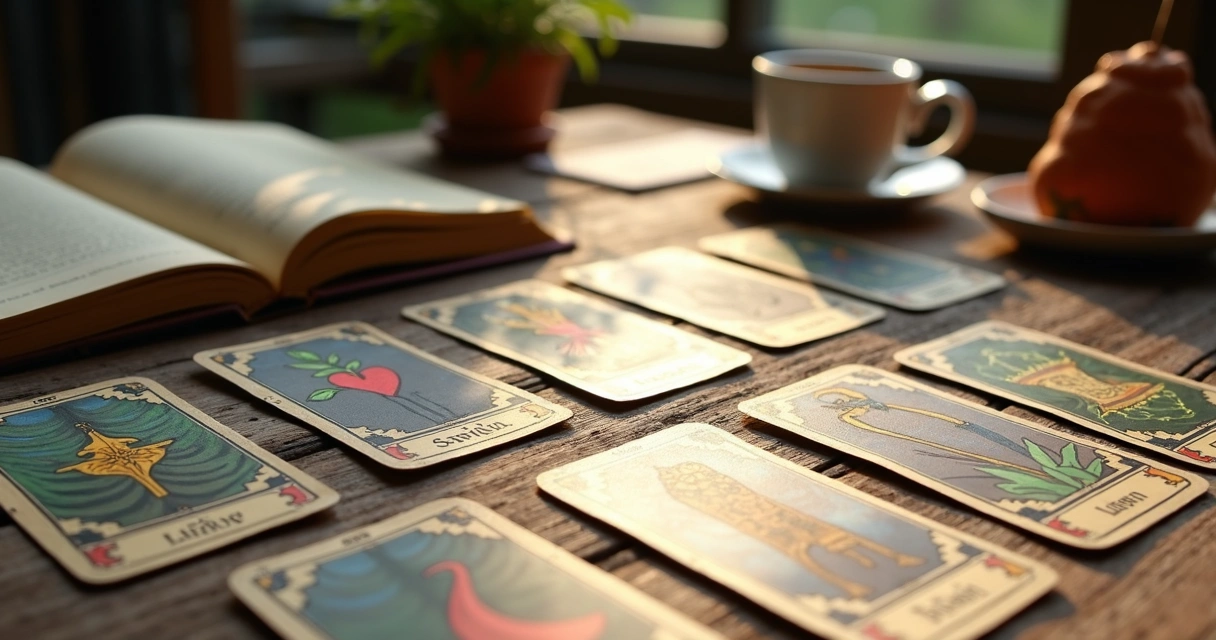 It’s easy to spot a difference compared to Tarot’s 78 cards, filled with Major and Minor Arcana, suits, courts, and countless symbols. In Lenormand, every card represents something you probably encounter almost every week—Fox (work, cunning), Letter (messages), Stork (change), Ship (travel), and so forth.
It’s easy to spot a difference compared to Tarot’s 78 cards, filled with Major and Minor Arcana, suits, courts, and countless symbols. In Lenormand, every card represents something you probably encounter almost every week—Fox (work, cunning), Letter (messages), Stork (change), Ship (travel), and so forth.
- Straightforward images—interpretations rarely drift far from the object itself.
- Combinatory—cards are read in pairs or groups, blending their meanings into something specific.
- No reversals—unlike Tarot, there's no need to consider upside-down meanings.
- Rooted in playing cards—the original decks double as regular card games, reflected in the visual style.
Some old decks include quaint French imagery. Modern versions add color, whimsical art, or different layouts. Whatever the edition, the core remains: a direct language for everyday answers.
Understanding card meanings: from keywords to context
Let’s walk through a few examples to make it clear. Suppose you draw the Ring. In almost every system, that means commitment, contract, cycles, or partnership. Pair it with Letter, and you might see “a signed agreement” or “important documentation.” Put the Ring next to Snake, and the mood changes—a commitment gone wrong, deception in a relationship, troubled deals.
Want a few common Lenormand cards and their core meanings? Here is a sample:
- Rider: News, visitor, changes arriving soon.
- Clover: Luck, brief opportunity, happy accident.
- Scythe: Sudden cut, ending, sharp decision.
- Bear: Strength, authority, finances, power.
- Heart: Romance, passion, emotions.
- Clouds: Confusion, doubts, obstacles.
But meaning rarely sits still. Cards gain nuance from the context: the question, their neighbors, and real-life concerns. This is where digital tools like MysticLog become helpful, letting you log past readings and patterns for review. Sometimes, you won’t see the full meaning until you step back and consider what the cards have told your client before, too.
What makes lenormand spreads unique?
Unlike Tarot—a field where single, powerful images set the tone for entire readings—the Lenormand system works in clusters and patterns.
Two main layouts set the standard:
Petite tableau (the small spread)
Usually nine cards, laid in a 3x3 square. Each card is considered in relation to those beside it: left, right, above, below, and especially at the center. This approach creates a grid of meaning, touching everything from the querent’s immediate mood to outside influences and hidden motives.
- Center card—often considered the “heart” of the matter.
- Cross positions—show challenges and support.
- Corners—can reflect background energy, context, or hidden elements.
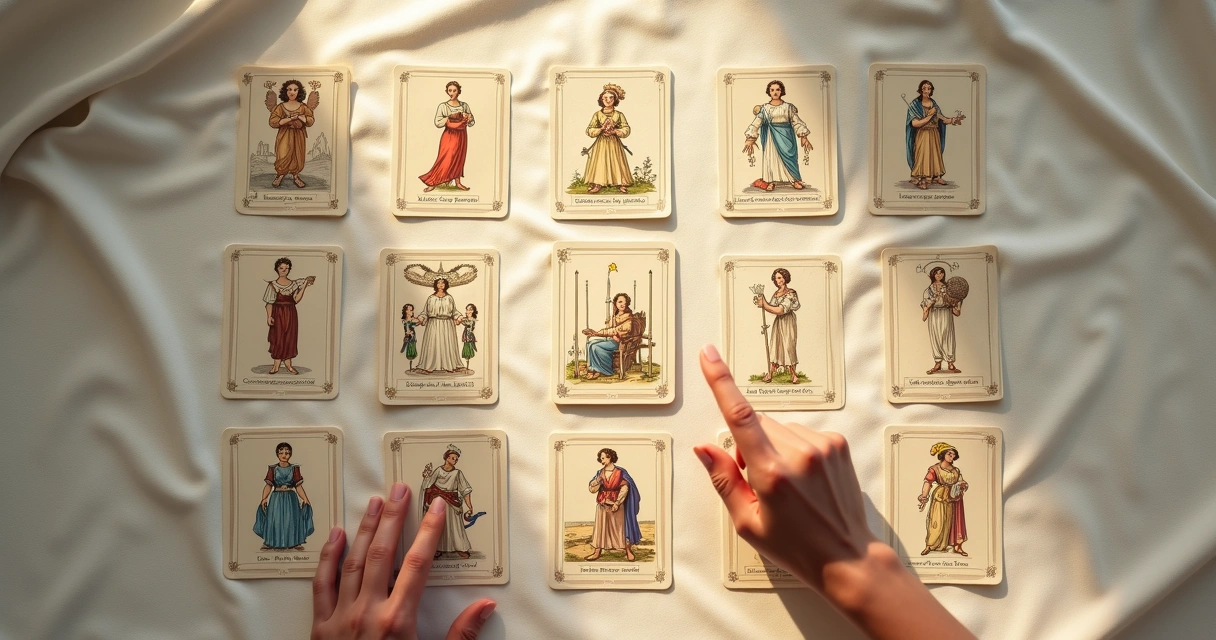 The nine-card Petite Tableau is popular for quick answers about daily situations, relationships, or even the energy of the week.
The nine-card Petite Tableau is popular for quick answers about daily situations, relationships, or even the energy of the week.
Grand tableau (the big picture)
For the bold at heart, the Grand Tableau means placing all 36 cards in a grand 8x4 (or 9x4) spread. It’s both a landscape and a timeline—showing people, events, blocks, and advances across almost every area of life.
- Significator card—you (or the querent) are represented, usually by Lady or Gentleman card, as a focus point.
- Houses—each card is read both on its own and by its position in the spread.
- Method of distances—how close or far a card is from you (the significator) changes its influence.
- Stories in lines—horizontal and vertical sequences become events, journeys, problems, solutions.
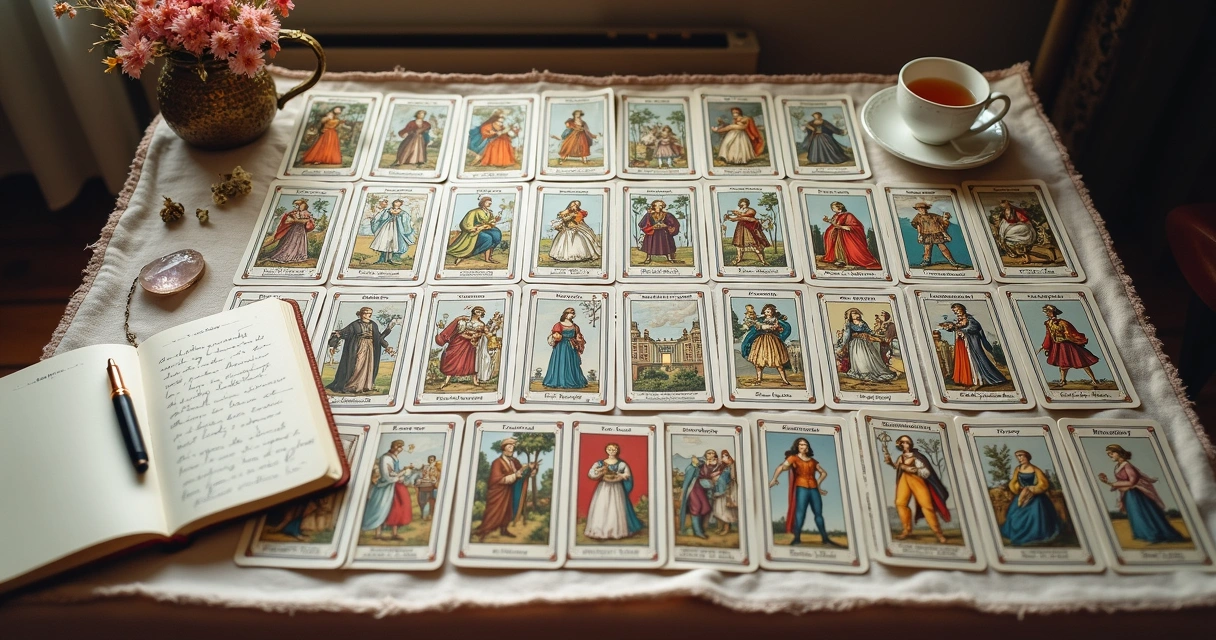 The Grand Tableau isn’t for the hurried. It’s a favorite of professionals and seasoned readers wanting to map entire months or answer complex client questions. Beginners might feel lost on the first try. My advice? Start with three, five, or nine cards—build up as you go.
The Grand Tableau isn’t for the hurried. It’s a favorite of professionals and seasoned readers wanting to map entire months or answer complex client questions. Beginners might feel lost on the first try. My advice? Start with three, five, or nine cards—build up as you go.
Interpreting card combinations: moving beyond keywords
At the core of nuanced interpretation is the combination of cards. Rarely does a Lenormand card stand alone. Instead, meaning emerges from how two or more cards interact. If you read “Book + Child,” you might see “learning something new.” If you read “Cross + Fish + Tower,” the message could shift to “business loss due to bureaucracy.” Sometimes, combinations contradict each other, suggesting confusion—or a complicated situation that won’t resolve easily.
It’s not just what each card says, but what they say together.
Here’s a simple, step-by-step method for interpreting combinations—try this whether in a quick reading or a longer session:
- Define your question. Be clear and specific. “Should I pursue this job?” not just “Tell me about my future.”
- Draw and arrange your cards. Three, five, or nine to begin, depending on comfort level.
- Read left to right. Cards reveal a flow of action or outcome, with left being the root, right being the result.
- Combine keywords naturally. Don’t force poetic sentences. “Scythe + Letter” can simply be “quick message” or “sudden news.”
- Pay attention to patterns. Repeating cards in readings, clusters of negative or positive cards, and mirrored layouts can all inform your interpretation.
- Reflect with context. Bring in what you know about the client, the situation, and the mood of the session.
A digital logbook, such as that provided by MysticLog, lets you track combinations, compare readings over time, and refine your style. This can make even subtle shifts in meaning easier to spot and remember. Reviewing your previous readings for similar card interactions is not only practical, but also helps you trust your intuition more as patterns emerge.
Real-world examples: lenormand for daily guidance
Suppose a client asks, “Will a new job opportunity be good for me?” You draw:
- Ship – Clover – Tower
The Ship suggests movement or transition. Clover brings short-term luck. Tower usually points to institutions, corporations, or structure.
So, the cards together imply: “This job change will bring a stroke of luck within a big company.” Add a fourth card like Clouds next, and you might caution, “But it will start out confusing or unclear.”
Or, a classic question: “Is this relationship leading to commitment?” You pick:
- Heart – Ring – Tree
Heart and Ring strongly suggest a relationship turning committed. Tree adds longevity—so yes, there’s growth, but it might be slow and steady rather than rushed. Such layered meaning helps clients manage expectations and spot opportunities or challenges ahead.
If you find yourself struggling for new approaches, pages like the Lenormand category on the MysticLog blog offer ongoing tips, and our blog on daily intuitive readings draws useful distinctions between Lenormand and wider oracle systems.
From predictions to practical insight: what lenormand really offers
It’s easy to think of fortune-telling as just predicting what tomorrow holds. But the Lenormand system has always offered something a little different—guidance that’s grounded and concrete. These cards highlight what can change, warn about complications, and show a way through the everyday. Their power comes from showing possibilities and patterns, not destiny set in stone.
The cards help you see, not just foresee.
Many practitioners use Lenormand to:
- Weigh choices and see the likely results of different paths.
- Prepare for practical obstacles or periods of confusion.
- Strengthen client relationships by tracking questions and themes across time.
- Explore options in work, love, moving house, travel, and big life shifts.
This practical focus means you don’t need to believe in fate for the system to be helpful. Even skeptics sometimes find the logic and connections in the cards helpful for self-reflection.
Tips for beginners and advanced readers
If you’re just starting out
- Start small—three cards are enough. Watch how they interact.
- Keep a notebook (or better, a digital log with MysticLog) of spreads, questions, and outcomes.
- Stick to clear, specific questions rather than general ones.
- Refer to reliable resources, and consider basic guides like reading a 52-card deck with simple methods to understand foundational card reading ideas.
- Accept uncertainty—sometimes the answer isn’t obvious right away.
For more experienced practitioners
- Experiment with large spreads. Try the Grand Tableau for deeper questions.
- Analyze recurring patterns across time, perhaps with help from the MysticLog digital assistant for pattern recognition and structured notes.
- Practice reading for others and compare your interpretations to how events unfold.
- Follow advanced insights and practices, like the step-by-step guides at building confidence in Tarot readings, to sharpen your confidence across multiple systems.
Building your study alongside Tarot and other oracles—resources like the oracles resource section—can also broaden your understanding and help you switch methods when needed.
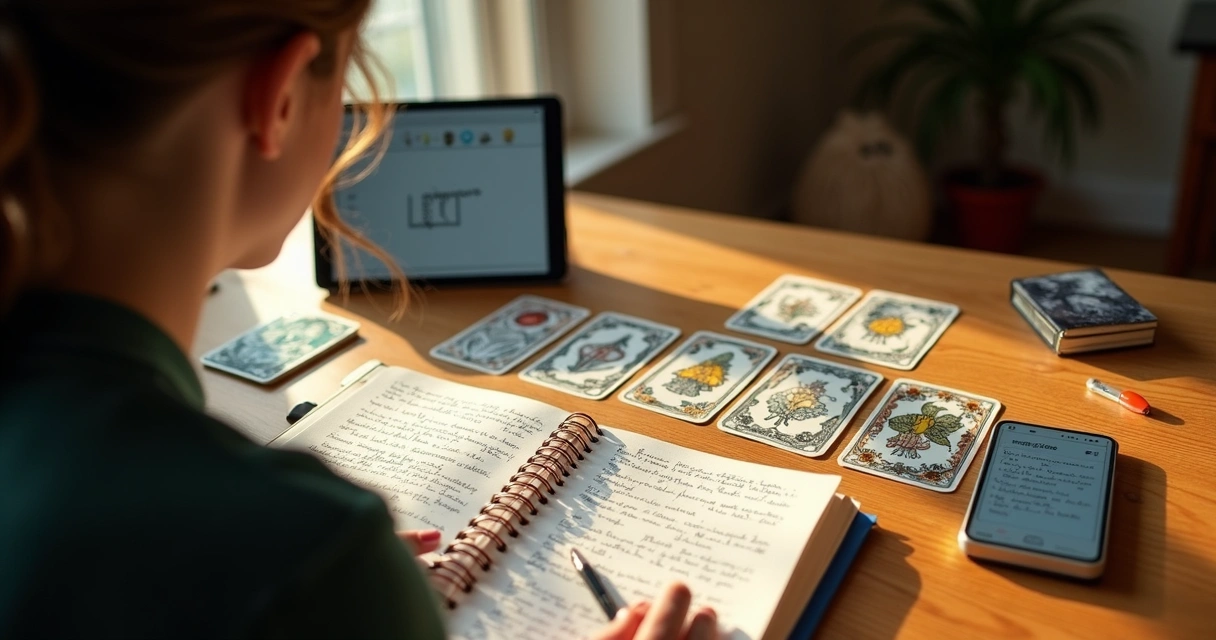 Using digital tools like MysticLog for lasting growth
Using digital tools like MysticLog for lasting growth
The days of piles of paper notes and missed client patterns are, thankfully, behind us. With platforms like MysticLog, you can store readings, keep track of querents’ changes over time, chat with an AI assistant about card meanings, and highlight connections that might otherwise get lost. This is as valuable for student readers as it is for working professionals. Reviewing historical reading logs often reveals repeating themes or subtle warnings that only come to light after a few months pass.
Most users report that digital organization improves their confidence in both interpreting and tracking the development of readings. In particular, MysticLog helps bridge the gap between old wisdom and modern practice, providing a space to learn and experiment without fear of “doing it wrong.”
Conclusion: making lenormand part of your modern toolkit
The magic of Lenormand isn’t in secret codes or mystic rituals. Its power lies in giving language to daily experiences, showing the path between choices, and providing gentle course-corrections along life’s winding road. Anyone—absolute beginner, seasoned professional, student of Tarot or oracles—can use these cards for insight.
If you want more clarity in your readings, need help organizing your notes, or just want to carve out a judgment-free space to keep learning, MysticLog was built for this very purpose. Let it be your digital companion as you practice, log, and grow into the kind of reader you hope to become. Take your next step—not just in fortune-telling, but in practical, mindful living.
Frequently asked questions
What are Lenormand cards used for?
Lenormand cards are used for practical card readings. They often give clear and concise answers to questions about love, work, decisions, and daily dilemmas. Many readers use them to map possibilities, track life changes, and guide decision-making, rather than only predicting the future.
How do I read Lenormand cards?
You read Lenormand cards by looking at groups—pairs, lines, or grids—and combining the direct meanings of each image. Start with your question, draw several cards, and read them together in context. Pay attention to patterns, position, and real-life situations. Beginners should begin with three or five cards. Keep notes for comparison, using a physical notebook or a digital tool like MysticLog.
What is the difference between Tarot and Lenormand?
Tarot decks have 78 cards, rich with symbolism, and often look at spiritual growth and inner journeys. Lenormand decks have 36 cards and focus on practical, everyday concerns. Lenormand tends to be more direct, using card combinations to give specific answers. Tarot also includes themes of personal evolution, while Lenormand is favored for actionable guidance. For more details, see guidance on using oracle cards for daily intuitive readings.
Where can I buy Lenormand decks?
Lenormand decks are found at many online bookstores, spiritual shops, and specialty card retailers. Look for trusted sellers who offer decks with clear imagery and booklets in your preferred language. Collectible editions, like historic versions registered in libraries, are usually available from auction houses or antique book dealers.
Are Lenormand cards good for beginners?
Yes, Lenormand cards are often recommended for beginners due to their simple images, direct meanings, and logical structures. Starting with a small spread makes it easier to learn combinations. Many find that keeping a log—digitally, with something like MysticLog—makes studying even more accessible and effective.

